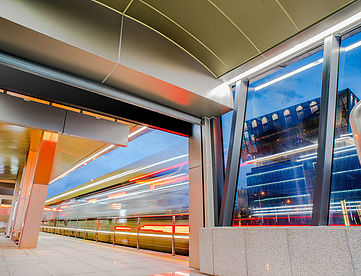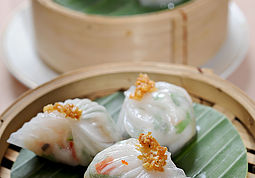
Shenzhen
Living Here
Living in one of the largest and wealthiest cities in China has its perks; its location is particularly convenient, coastal but also in easy reach of Hong Kong, Macau and Guangzhou if you fancy a change of scenery.
From clothes to food, buying things that are produced more locally could actually turn out to be quite a bargain. If you’re at a fabric or farmers market, it’s also common to haggle for lower prices. If you’re used to brand-name goods however, be prepared to pay high import taxes. You may also be hard pressed to find reasonable prices when it comes to items like avocados and cherries, which seem to be rarer in China.

Cost of living in Shenzhen
As one of the main trading and technology hubs in China the cost of living in Shenzhen tends to be slightly higher than some of the city’s inland counterparts.

Accommodation Cost

Shenzhen is a huge metropolitan city with lots of different housing options. Apartments are the most common form of accommodation and can be very affordable if you share one with flatmates.
Transportation
Shenzhen is very conveniently located near the coast and other cities of interest, making it a favourite amongst expats looking to get the best of both worlds. There are expressways linking Shenzhen to Guangzhou and Zhuhai with coaches departing every day. The trains from Guangzhou stop in Shenzhen also, meaning it is even easier to get to Hong Kong from Shenzhen now. Shenzhen also has 8 ports which means you can travel by ferry to Hong Kong too.

Airport
Twenty miles from downtown Shenzhen is the international airport. The airport offers over 150 domestic flights and 21 international ones, making your exploration of Asia even more convenient.
Metro
With over 240 kilometres of metro-line and around 199 stops, the Shenzhen metro station, like most metros in Asia, is efficient and an easy way to see the city. The metro is easily navigable more lines are in development currently to further increase the reach the metro has around Shenzhen.

Trains
Shenzhen is one the most prominent transport hubs in the whole of China as it connects mainland China with Hong Kong. From Shenzhen you can travel by train to Hangzhou, Shanghai, Xiamen, Huangshan, Nanjing, Chongqing, Wuhan and Xian.
Long-Distance Bus
Within Shenzhen there are over 40 long-distance bus stations to choose from, depending on where you’re looking to head in China. The most popular bus stations being: Huanggang, Futian, Bao’an, Yinhu and Luohu.

Food
Traditionally a Cantonese region, Shenzhen still retains some of its traditional cuisine like congee and dim sum. You can find some Chinese favorites too like hot pots, fried noodles, and a lot of Western dishes too, for when you’re feeling like getting a small taste of some of your favorite and familiar comfort foods.

The morning tea
Dim sum seems to be a way of life in Shenzhen, it is commonly eaten for breakfast at a leisurely pace (unlike in the rest of China). Often blurring the lines from where breakfast ends and lunchtime begins, Shenzhen dim sum restaurants often stay open all day people can truly take their time savoring South China’s most famous dish.

Char Siu
Long, deep red strips of pork, draped over a steaming bowl of rice doesn’t get much more comforting to the most discerning eater. Char Sui translates as ‘fork burn/roast’ and relates to the way the pork is cooked on long skewers over a fire or in an oven.

Beef chow fun
This Cantonese staple incorporates stir-fried beef and wide rice noodles with bean sprouts. This kind of dish could be compared to grabbing a pizza in the USA or fish and chips in the UK!






